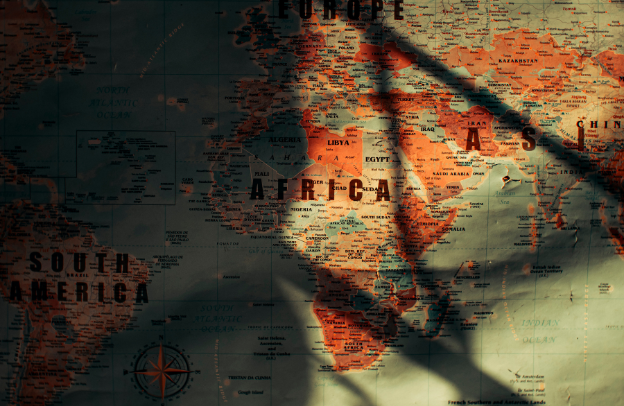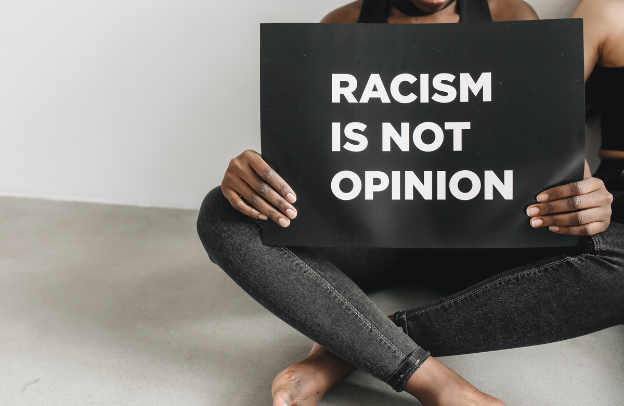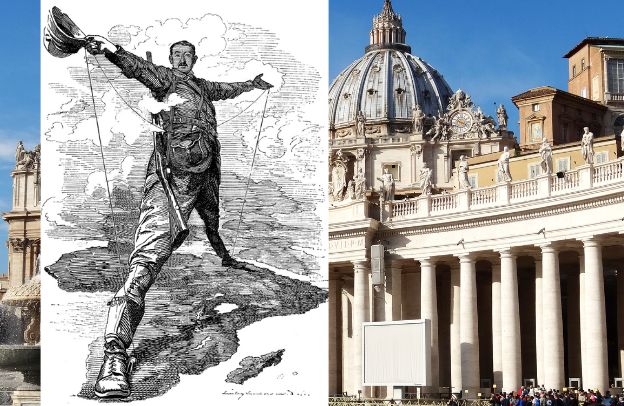Racism And Slavery: African Crisis Is An Invention Of The West

This is part five in the series “Racism And Slavery: Reflection On Human Madness by Stefano Anselmo”. See previous publications to learn more.
Want to learn more about storytelling? Start by downloading the first chapter of The Storytelling Mastery.
Here is a list of all the articles in the series – Racism And Slavery: Reflection On Human Madness by Stefano Anselmo:
- Racism And Slavery: Reflection On Human Madness by Stefano Anselmo
- What Racism Requires: Religion And Science Were To Go Hand In Hand
- Racism And Slavery: How The Hamitic Theory Began To Crumble
- In America Before Columbus: Exploring European Racist Stereotypes
- Racism And Slavery: African Crisis Is An Invention Of The West
- Our House Slaves: European Centuries Of Heritage
- Religious Endorsement Of Slavery As A Legitimized Business Both In Islam And Christianity
Western attitudes often reflect a sort of well-disguised cultural arrogance. The cultural reality of Africa is often ignored, misunderstood, or devalued to the point of denial. This applies in many areas: language, society, religion, and cognition.
Regarding language, insistence on calling African languages “dialects” as if referring to them as “languages” was an exaggerated choice, as if African languages had never been languages of culture.
In society, while Europe is referred to in terms of “peoples,” Africa is referred to in terms of “ethnicities” or, worse, “tribes,” as if Africa had not produced states, empires, and social organizations of high complexity.
In religion, Africa is often labeled as the continent of animism, implying a subtle undertone of primitivism: as if, as everyone knows, Italians do not spend millions of euros to resort to all kinds of magicians, as if Italian newspapers and TV were not full of horoscopes and tarot readers. In cognition, African ways of knowing are seen as childish and naive, while European ways are seen as scientific.
Similarly, it is reductionist to speak of “African culture” because Africa is a continent rich in diverse cultures and peoples with different cultural aspects, including dance and music.
Not to mention social structure, cuisine, architecture, etc. Africa, larger than Europe three times over, has about 1 billion inhabitants; almost 3000 very different languages are spoken there, along with thousands of dialects. Africa has 54 independent states. Africans are simply united by a bit of melanin.
It is not true that African languages are simple and have a basic structure. A small but effective example: let’s translate “I’m going home” into some African languages:
20 African languages:
- Luo (mainly Kenya and Tanzania): Adhi ot
- Bissa (Burkina Faso and Mali): Kon do però
- Tigrinya (Eritrea and northern Ethiopia): Gheeza kikeyid’e
- Fula of Futa (Senegal): Mi do yaha gallam
- Lari (Congo Democratic Republic): Ku nzō intā kwenda
- Lingala (Congo Democratic Republic): Nazongaka na ndako
- Wolof (Senegal): Ma angi dem kër ge
- Mandinka (mainly Gambia, Guinea-Bissau, and Mali): Mbe taa swwoo kono
- Kinyarwanda (Rwanda): Niyewe ngiye iwaku
- More (Burkina Faso: Mam rabda Yiri
- Jula (Burkina Faso, Ivory Coast, and Mali): Me taga luma
- Sango (Central African Republic): Mbi gé na kodrö (pron. Mbi ghé na kodrö)
- Bamileké (Cameroon) Nge ngem mbe (pron. nghe ngheem be)
- Bambara (Mali) N bɛ ta so
- Swahili (Kenya and Tanzania): Mimi naenda nyumbani
- Baulé (Ivory Coast): N ko aulò lo
- Oromo (Ethiopia and Kenya): Ani gara manaatti nan deebbi’a
- Igbo, Nigeria – M na-ala n’ụlọ
- Hausa, (Nigeria and Niger): – Zan tafi gida
- Yoruba, Nigeria – Mo nlo si ile
ON SLAVERY
Slavery and servitude had to be justified by “certain” motivations.
A clear example of hypocritically disguised racism can be found at the beginning of the slave trade and slavery: in the mid-15th century, Pope Nicholas V granted Spain the right to evangelize, conquer, and deport Africans into “perpetual slavery,” considering them enemies of Christianity (papal bull Dum Diversas, 1447-1455).
With the bull Romanus Pontifex, Nicholas added the right to trade slaves, concessions confirmed by Callixtus III in 1456 (bull Inter Caeterae), and by Sixtus IV in 1481 (bull Aeterni regis).
Spanish Pope Alexander VI also granted Spaniards the same concessions given by Nicholas V to the Portuguese, through three bulls promulgated in 1493, Eximiae devotionis, Inter Caetera, and Dudum Siquidem. In 1488, Pope Innocent VIII accepted one hundred slaves as a gift from Ferdinand II of Aragon and distributed them to the cardinals and Roman nobility.
It is surprising that some tragedies barely catch the public attention, even among the most well-intentioned. For example, everything related to African issues, or the Black World does not “draw audiences.”
Take, for instance, a couple of important films centered on dramatic events such as the Holocaust of the Jews and the Slave Trade, both directed by Steven Spielberg: “Schindler’s List” from 1993 about the Holocaust and “Amistad” from 1997 about the Slave Trade. Regularly, TV broadcasts “Schindler’s List” in prime time and “Amistad” after midnight because evidently, the genocide of blacks arouses little interest.
Why is so little said about the Slave Trade, the ensuing slavery, the horrors, and the wickedness perpetrated by Westerners against African Blacks? Although it was not a genocide in the sense of “ethnic cleansing,” almost 400 years of the Slave Trade, supported by the main European countries, stand out on the criminal record of the West.
To achieve their goal, they implemented specific strategies, often common to different forms of social discrimination and racism, sometimes resulting in genocides.
At the heart of the lucrative operation of enslaving much of the African continent’s populations, we can identify some fundamental elements: firstly, the presumed genetic and intellectual superiority of the white man with all the consequent cultural models of symbolization and classification of the so-called inferior races aimed at dehumanizing them.
The frequent tribal wars that have seen, over the centuries, the confrontation between different ethnicities but also religions: think of the spread of Islam and Christianity in Africa, which favored disastrous alliances by the native ruling classes with the white man and the consequent reduction to slavery of enemy populations often accompanied by torture, segregation, persecution, and reduction to slavery.
The flourishing slave market had both victims and perpetrators, the latter not exclusively of white skin.
Slave Ships That’s what the ships employed in the black slave trade are called, especially in the Atlantic slave trade between Africa and the Americas as part of the triangular trade. According to some studies, these ships transported about twenty million African slaves, but as we will see in the following sections, estimates vary.
HUMANITARIAN CATASTROPHES IN COMPARISON
Holocaust Of The Jewish Slave Trade
The Holocaust was conceived by a group of few men with sick minds: Hitler, Himmler, Goebbels, Speer, and Mussolini, who seems to have been the instigator. Other states supported Germany or remained neutral, but without carrying out mass exterminations.
The Slave Trade involved the heads of state and political, economic, military, and ecclesiastical authorities of the economically more powerful European states at the time, with the complicity of the ruling classes. The Holocaust was plotted against a single people, that of Israel.
The intent was to exterminate it entirely. The Slave Trade affected an entire continent, and the people directly involved or even just touched by slavery were thousands. The Jews are a people and recognize themselves as such, united by the same religion and a millenary culture.
Africans are not a single people but the inhabitants of a continent composed of about 3000 peoples, each culturally different from the others in terms of beliefs, language, customs, and traditions. Visually, Jews do not have common features and are almost unrecognizable.
Many Jews are morphologically similar to Palestinian Arabs; indeed, there are significant linguistic loans from Hebrew to Arabic. However, today in Israel, we find individuals of Central European origin with blond hair and blue eyes, as well as Arab types or the Beta Israel, the black Jews from Ethiopia.
Visually, Africans are only characterized by the dark color of their skin and more or less kinky hair depending on the areas of origin. But this detail, from a European point of view, is a clear dividing line. It is noteworthy that in China or Japan, where everyone has black eyes, there is no mention of eye color on identity documents.
Similarly, in the hotel registers of some African countries, there is a field for “tribe affiliation” because, for example, in Tanzania, there are more than 130 different tribes in language and customs.
On March 2, 2000, Pope John Paul II asked for forgiveness, stating that Christians had denied the Gospel, violated the rights of individuals and peoples, and closed their eyes to injustices against the Jews.
On August 9, 1993, Pope John Paul II visited the House of Slaves in Gorée (Senegal) and implored the “forgiveness of Heaven” and the forgiveness of Africa for the historical crime of slavery of which even Christians have been guilty.
The Holocaust of the Jews lasted “only” a handful of years from 1941 to the end of World War II.
The Slave Trade lasted almost 400 years: from 1444 until 1850. Slavery was abolished (only officially) in 1833 in Great Britain, in 1848 in France, in 1865 in the United States, in 1963 in Saudi Arabia, and in Mauritania only in 1980. Slavery and servitude were at the root of the economic power of most civilizations, so the new laws did not see real enforcement until the 20th century.
The media impact of the Holocaust was very strong and is still rightfully remembered with commemorations and cited in history books as a reminder of an abominable example that must not be repeated.
The media impact of the Slave Trade is low. It seems “uninteresting”: it is rarely discussed and briefly at that.
The following estimates of the number of victims of Nazism are generally considered reasonably reliable.
- 5.6–6.1 million Jews
- 3.5–6 million Slavic civilians
- 2.5–4 million prisoners of war
- 1–1.5 million political dissidents
- 200,000–800,000 Romani and Sinti
- 200,000–300,000 people with disabilities
- 10,000–250,000 homosexuals
- 2,000 Jehovah’s Witnesses Total: between 13 and 19 million people killed and/or cremated over four years, averaging 11,000 people per day.
Estimates of Africans raided, killed, died of hardship, and survived the Slave Trade range from more optimistic estimates of 7 million people to more catastrophic estimates that even speak of 100 million people.
However, it has been calculated that only 30% of those enslaved survived the crossing. John Hiffle asserts: There is no reliable way to assess human losses before embarkation – Hiffle refers to runaways, resistors, and suicides (Peoples of Africa, Mondadori, p. 185). P. Manning estimated that by 1850 if it were not for the Slave Trade, the population of the entire sub-Saharan Africa could have amounted to 100 million people, instead of only 50 (Slavery and African Life, Cambridge University Press 1990).
Wikipedia reports: that overall, something like 12 million slaves crossed the ocean (the estimate is approximate). The BBC speaks of 11 million. The Encyclopedia Britannica believes that forced migration until 1867 can be quantified between 7 and 10 million. The Encyclopedia of the Middle Passage estimates between 9 to 15 million.
Most contemporary historians estimate that the number of African slaves transported to the New World is between 9.4 and 12 million.
It was one of the largest migrations in history (and certainly the largest forced migration), which also led to significant imbalances between the white and black populations (in early 19th-century Jamaica, the ratio reached 1 to 20), and the numerical superiority constantly posed a danger of slave revolts for the slave owners.
Fig. xx – Congolese men with hands amputated for not collecting enough rubber.
There have always been slaves… With such statements, many authors, journalists, but also ordinary people, cleanse their conscience, feeling relieved of the guilt of the shame and abominable ferocity of the Slave Trade.
However, for the sake of truth, especially historical truth, it is necessary to highlight the clear difference between the figure of the slaves of the Slave Trade compared to that of previous centuries and, above all, of the major African cultures.
See also What, To The Slave, Is The Fourth Of July 1852 – Frederick Douglass Series
The “modern” slave, the one from the trade, for instance, was a being legally deprived of all human rights, considered someone else’s property, and therefore could be bought, sold, lent, freely used like any object, and had no chance of emancipation. In the past, however, things went differently depending on historical periods and different societies.
We know that at the beginning of history, slavery was rather rare among nomadic peoples, dedicated to pastoralism, and probably began with the advent of agriculture. We have documentation of the existence of such practice both in Europe and among Sumerians, Assyrians, Babylonians, Hittites, Jews, Egyptians, Indians, and Chinese. However, some societies granted slaves certain rights protected by law.
Want to learn more about storytelling? Start by downloading the first chapter of The Storytelling Mastery.






